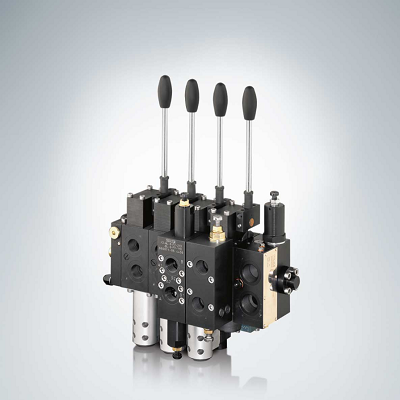The PSL series of directional spool valves from HAWE North America, Charlotte, N.C., are noted for a modular design that combines all actuation functions in one control block, making it individually adaptable to specific application requirements.

PSL series valves with CAN Lite offer quick and simple commissioning.
The capabilities of these proportional-directional valves have now been extended, thanks to the new actuation option: CAN Lite. The company said it offers an ideal and cost-optimized entry into CAN bus communication in many mobile machines. It’s particularly suited for manufacturers that are interested in quick commissioning, thanks to low cabling effort and preset operating parameters.
By switching from a valve controlled by pulse width modulation to CAN bus, the valves can be addressed precisely and functional parameters easily adjusted. The start and end position of the spool valve are already preset on delivery for easy commissioning. The hysteresis typical for spool valves during operation is very low with PSL-CAN Lite. The entire valve bank connects to the machine’s bus system with only one connector plug. This minimizes cabling effort and shortens commissioning time.
The CAN-Lite actuation can be combined with the fully equipped CAN actuation version with spool position feedback from HAWE in one valve bank. Depending on requirements for precision and repeatability, the machine manufacturer can decide which type of actuation is best suited for each customer. Officials said this fits the company’s motto, “Only as much as necessary.”
Type PSL directional spool valves generally have operating pressures up to 420 bar (6,091 psi) and a flow rate range from 1 to 1000 lpm (0.26 to 264 gpm) available in four sizes. The different sizes can be combined in a valve bank. If only the size required for the respective individual function is used in the valve bank, weight is reduced and fine control is further improved.
HAWE
www.hawe.com
Filed Under: Mobile Hydraulic Tips, Valves & Manifolds